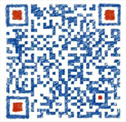
On March 20th, the annual electronica China exhibition opened at the Shanghai New International Expo Center. This year's exhibition scale is much larger than previous exhibitions. In addition to all the exhibition halls, there are three temporary tent exhibition halls. The three-day exhibition focused on the latest technologies and solutions for industrial electronics, automotive, consumer electronics, communications systems, IoT applications, medical electronics, military, aerospace and other industries, while AI, 5G and IoT became Highlights of this exhibition.

In recent years, intelligent network and new energy vehicles have become important applications in the electronics industry. In 2018, China has become the world's largest new energy vehicle market for four consecutive years, with production and sales of 1.27 million units and 1.26 million units respectively, an increase of 60% over the same period of the previous year. % and 62%. In addition, by 2040, China's self-driving car sales will reach 14.5 million units, which will account for 44% of total global sales. This has also made a significant contribution to the development of China's electronics industry.

At present, the high cost of power batteries and low energy density have become the bottleneck restricting the development of new energy automobile industry. Solid-state batteries are consistently optimistic by domestic and foreign governments and industries, and are one of the most promising solutions to replace traditional ternary batteries and lithium iron phosphate batteries. At the Shanghai Electronics Show in Munich this year, Japanese international electronics giant TDK exhibited the world's first CeraCharge sample for mass-produced rechargeable solid-state batteries, mainly used in real-time clocks, IoT devices, energy harvesting systems and wearable devices. The factories are all in Austria and are scheduled to go into production in April 2019.

Manager Zhang Xiaotong of TDK Product Marketing Department said in an interview that the first CeraCharge solid-state battery products mainly replaced traditional button batteries and super capacitors. The advantage is that CeraCharge is a secondary rechargeable battery, which is designed to be permanently installed and small in size. The button battery is a primary battery that requires a spring leaf to hold and takes up a lot of space. At present, CeraCharge solid-state batteries can only be used in the industrial electrical field because the maximum operating temperature is 85 degrees Celsius, which cannot meet the requirements of 135 degrees Celsius for vehicle electrical equipment. TDK also has a traditional lithium-ion battery business, but its application areas are mainly concentrated in the industrial field, unlike Panasonic batteries, which are mainly focused on the automotive field.

Researcher Chen Yongzhen, head of the multi-disciplinary cross-center energy storage technology research group of the Institute of Electrical Engineering of the Chinese Academy of Sciences, believes that all-solid-state batteries are still far away from electric vehicles and power storage applications, but all-solid-state batteries are particularly suitable for applications including real-time clocks, Bluetooth. Small-scale thin-film application scenarios that are cost-insensitive, require high security, and high energy density, such as beacons, wearable devices, and micro-energy harvesting systems. This is the most accurate application scenario for solid state batteries.

Mr. Zhang Ding, an associate professor at the School of Chemistry and Chemical Engineering, Taiyuan University of Technology, analyzed that the CeraCharge solid-state battery that TDK debuted at the Shanghai Electronics Show in Munich this year is still in a state of low voltage and small capacity, but it does some work on performance optimization. Whether it can be bigger or not depends on whether the process can be enlarged. Lithium-ion power battery packs have high requirements for the performance consistency of single-cell batteries. Solid lithium-ion battery cells need to develop a reliable integrated process to achieve good grouping.
Address: 9G, West Block, North Yihai Plaza, Chuangye Road, Nanshan District, Shenzhen
Contact: Mr. Chen
Tel: 0755-26074059
Fax: 0755-22703955
E-mail:joechen@28smart.com